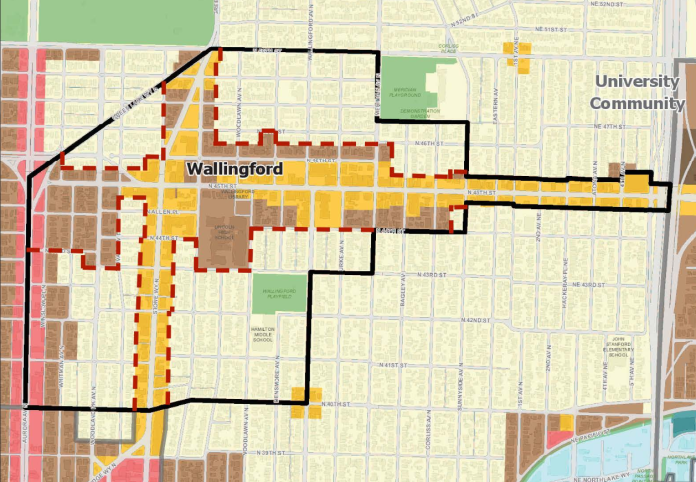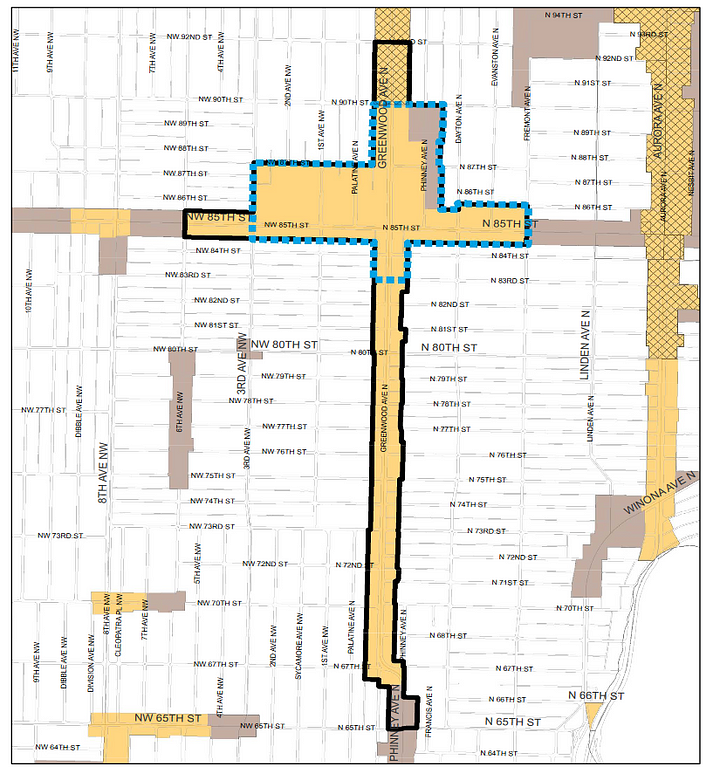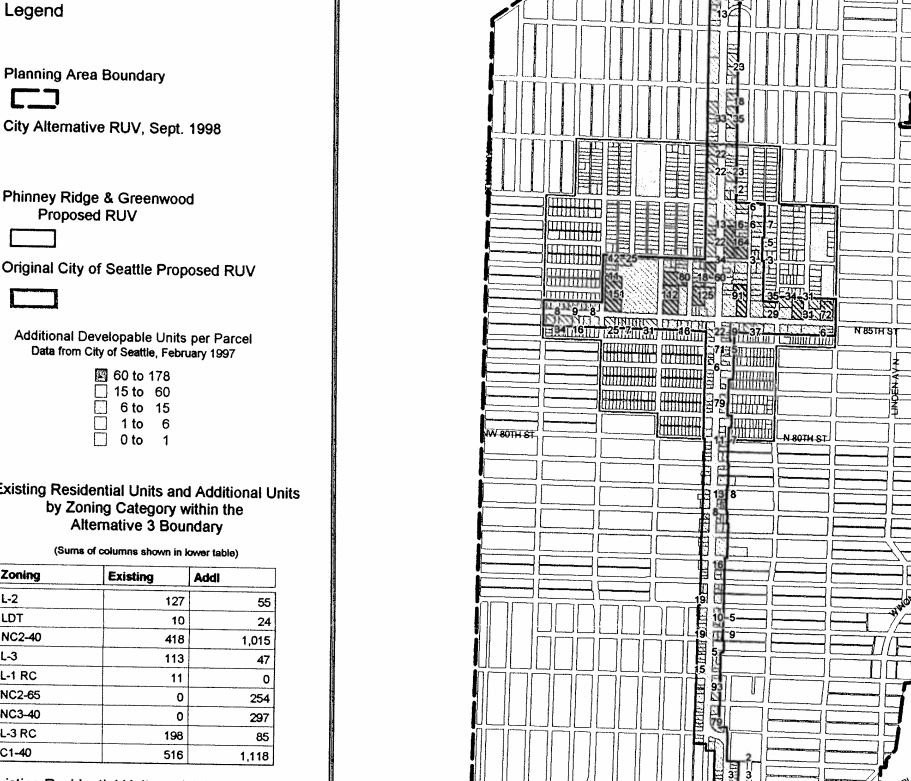
In my Sightline piece from May, I described how homeowners in Wallingford have worked for decades to block housing via downzones, increasing development burdens, and dominating the inequitable and anti-tenant neighborhood planning process. Just last year, the Wallingford Community Council (WCC) proposed a comprehensive plan amendment that would have removed over 50 blocks and the only park out of the already gerrymandered Wallingford Urban Village.
Of course, nearly all areas eliminated were zoned single-family, which will see a nominal uptick with Mandatory Housing Affordability (MHA) Program rezones. The inequitable aspect here is that Wallingford is majority renter with a median age of 33. Per a colleague, the proposed gerrymander wasn’t even put to a vote (oops), unsurprisingly the WCC board’s demographics are the complete inverse of the neighborhood. This gerrymander would have increased development pressure on existing buildings in the urban village, placing existing businesses and multifamily housing at greater risk for redevelopment — all the while removing a sizeable chunk in future MHA units or in lieu fees.
The city council summarily rejected the proposed comprehensive plan amendment, and I kind of assumed classist tactics like that wouldn’t be tried again. So I was a little surprised to see that the Phinney Ridge Community Council put out a survey to test the waters about removing a significant portion of the (already inequitably gerrymandered) Phinney/Greenwood Urban Village. The survey is titled, ‘Should we change the boundaries of the Greenwood-Phinney Urban Village If doing so means developers would provide more on-site parking in the future?’
Ah yes. Parking. I should have guessed it.
A handful of residents spent a ridiculous amount of time trying to kill the Phinney Flats project in this part of the urban village. This project will provide homes for those that can’t afford million dollar homes. It also won’t provide parking. Local homeowners appealed the project to kill it by requiring parking. The path they used was on a technicality, which the city council courageously and righteously modified in a package of sweeping reforms, so that car-free buildings could continue to be built near transit. In the midst of worsening housing and climate crises — the city council action was a step in the right direction.
With the city council modification, the homeowners opposed to the project could no longer kill/delay it, and so they agreed to dismiss their suit. In the most recent update, the residents wrote, “We hope you will stay involved as we move on to the next steps of restoring parking sanity in Phinney Ridge and throughout the City.”

The path the Phinney Ridge Community Council (PRCC) is proposing would be to remove over a quarter of the Phinney/Greenwood Urban Village. New development located outside the gerrymandered border would only be eligible for a 50% reduction in required parking, instead of the current 100% reduction.
The result of such an inequitable action would be an increase in rents and development pressure on existing properties within the urban village. It would also raise the cost of development for those projects along the Greenwood Ave N between N 65th St and N 75th St — a highly bikeable, walkable, and transit accessible location where parking should not be required. Furthermore, it would reduce MHA units produced on site, or in lieu fees collected. They also suggest the boundary could maybe be moved up to N 80th St.

This isn’t really surprising. The ‘neighborhood planning’ for Greenwood was dominated by homeowners (because zoning). The city proposed a sizeable boundary for the urban village, but homeowners were having none of it. They gerrymandered 32 blocks out of the urban village, and all of the open space at the time. Seems pretty democratic and equitable, right?

Unfortunately, Wallingford and Phinney/Greenwood Urban Villages aren’t unique in this aspect. The history of the ’90s neighborhood planning in Seattle is one of inequitable outcomes and those opposed to new housing dictating where new housing could go, and how expensive it would have to be. There was no Race and Social Justice Initiative — if there had been, the outcomes would have likely looked incredibly different. Furthermore, according to Shelterforce, just 12,000 people participated in Seattle’s neighborhood planning process, just over 2% of the population then (and just 1.6% today). The neighborhood planning process was neither equitable nor democratic.
Seattle’s land use and zoning both need a major re-boot, and maybe one day we’ll see it. Until then, I hope the city council continues to ignore these undemocratic, classist, anti-tenant proposals which will only exacerbate our housing crisis. Given how broad and deep it is — we should be expanding urban village boundaries (bigly). If you’ve got a moment, click the PRCC survey and let them know you support housing sans parking, and increasing urban village boundaries.
This is a cross-post from Mike Eliason’s blog on Medium.
Mike is the founder of Larch Lab, an architecture and urbanism think and do tank focusing on prefabricated, decarbonized, climate-adaptive, low-energy urban buildings; sustainable mobility; livable ecodistricts. He is also a dad, writer, and researcher with a passion for passivhaus buildings, baugruppen, social housing, livable cities, and car-free streets. After living in Freiburg, Mike spent 15 years raising his family - nearly car-free, in Fremont. After a brief sojourn to study mass timber buildings in Bayern, he has returned to jumpstart a baugruppe movement and help build a more sustainable, equitable, and livable Seattle. Ohne autos.



